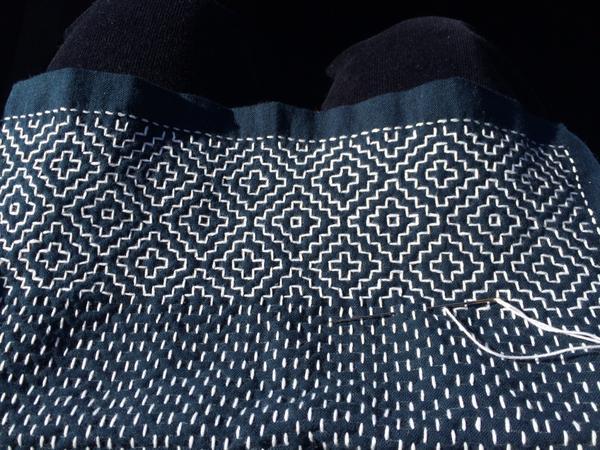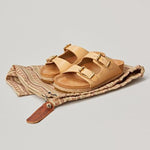We recently received our first delivery from the excellent Blue Blue Japan, which caused much excitement here in the H&H camp. Although firmly rooted in tradition and with a bias toward workwear in their collections, the clothing produced by Blue Blue is far from the usual workwear style you'd expect - it's basis is in the fields of rural Japan rather than the American Railroad, and designs much more 'Edo' than Engineer.

Blue Blue Japan Souvenir Jacket
Launched in 1996 by Seilin & Co. as the in-house brand of their Okura stores, Blue Blue was founded on their passion for indigo and a respect for traditional craftsmanship. The idea was to create a line of made in Japan clothing, that was distinctly Japanese, and used artisan fabrics, washing and dying techniques to produce garments that would grow with each use and change over time - just as they did when heavily used and repeatedly repaired in the past.
As with most of the items selected for the Heffernan & Haire shelves, Blue Blue are a brand that go beyond the average and the level of detail is often astounding. With hand stitched patchwork, hand dyed indigo and fabric techniques such as sashiko playing a large part in their work, we thought it worthwhile to write a little about these aspects of Japanese textile history....

Natural Indigo Dying
To us there's nothing quite like the rich blue of Indigo, and with the ascent of blue denim in western culture over the last 60 years or so, it's clear that most people agree - on some level at least. While most commercial denim has been produced with synthetic Indigo since the 1970's, there are still facilities in Japan where the traditional natural dying processes are still used today and this tradition goes back quite a way...
Cotton was first imported to Japan from China in the 16th century and prior to this most everyday clothing was produced from hemp or linen yarn. The Japanese found that cotton was a difficult fabric to dye except with the native indigo plant and, consequently, organic indigo dye was widely used throughout Japan as a colouring and designing agent for cotton textiles. Indigo dye became especially popular in the Edo period 1603 - 1867.
The Japanese indigo fabric dyeing process can last a week or even up to a month in some cases. It requires the cotton to be immersed and removed from the indigo dye vat up to 20 times, often being dried between each dip, depending on the depth of colour required. Japanese peasants preferred indigo blue shades for their textiles because they felt the colour mirrored the hue of the oceans surrounding the Japanese islands, a symbol that was both culturally and economically important. It was also said that the dye had properties which helped repel insects and snakes - another reason to clad yourself in indigo when working in the fields!
As we know from wearing raw denim jeans - over time, use and washing, the dark blue appearance gradually fades, producing a wonderfully variated indigo pattern. This is much appreciated by todays denim aficionados, but is also a highly regarded characteristic for collectors of vintage Japanese textiles.
Patchwork (Boro)
One of the most impressive features of the SS16 Blue Blue collection is hand stitched patchwork. Just looking at the time taken and various fabrics used gives you an appreciation for the workmanship involved in the garment. This patchwork technique developed, like many things, from poverty and necessity rather than any notion of style or taste.
The term usually used to describe this style of Japanese patch-working is Boro, which literally translates as 'tattered rags'. As the name suggests, it comes from garments and fabrics being repaired and re-repaired many times to increase their usable life and improve their durability.
Old garments and futon covers of this style are now highly regarded and very collectable as they are full of stories and have a deep connection to Japanese folk culture. This is a fairly recent development, however. During the period immediately following WWII they were often looked upon as shameful - they were viewed as a symbol Japans impoverished past.
Sashiko
Sashiko is a style of simple running hand stitching into fabric, often through several layers at once to create a heavier and more durable quilted fabric. The stitching is often done with a contrast white or natural thread over indigo dyed cotton cloth to create a patterned effect.

The quilted Sashiko fabric used by Blue Blue Japan is of the style traditionally used for Kendo (Japanese sword fighting) due to it's durability and antiseptic qualities. It is manufactured using hank dyed cotton yarn woven into a Sashiko quilt weave to produce a very strong heavy cloth - it will most certainly last the years and develop with the wearer over time - just the way we like it!




